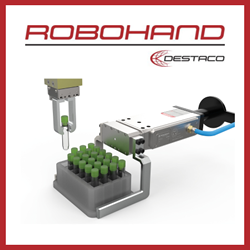Novotechnik - New-Inductive-Technology Position Sensors
TF1 Series consists of an inductively coupled position marker attached to a moving rod/piece of the user’s application that requires a position measurement and the sensor with operational and programming status LEDs.
Southborough, MA… Novotechnik, U.S. introduces the TF1 Series of touchless position sensors that are based on patented new-inductive technology. The sensors are unaffected by strong magnetic fields and metal flakes or filings present in a user's environment.
The physical properties measured by the TF1 are position, and for some of the digital interfaces: speed and temperature.
Key TF1 Series specifications include stroke lengths of 100 to 1,000 mm, resolution to 1 µm, absolute linearity of ≤ ±0.025% of full scale for analog and ≤ ±100 µm for digital outputs, reproducibility of ≤10 µm for ≤ 400 mm stroke lengths and ≤20 µm for >400 stroke lengths for analog outputs. A high-precision mode for digital outputs features repeatability to <5 µm. It has an update rate of >10kHz-equivalent to <100 µsec.
TF1 Series sensors are plug-in compatible with many existing sensors including magnetostrictive and resistance track sensors.
Other key TF1 Series specifications include operation within specifications with up to 100 g shock and 20 g vibration. The sensors are sealed to IP 67, have an operating temperature range of -40 to +85°C and unlimited mechanical life with floating position marker. Output interfaces include analog voltage or current, SSI, CANopen and IO-Link.
To learn more contact Novotechnik U.S. at 508-485-2244 or view specific TF1 Series information at www.novotechnik.com/tf1 .
Featured Product

DESTACO - Revolutionizing Industrial Automation
Looking for a reliable solution to enhance your automation process? Look no further than the DESTACO Robohand Grippers. These grippers are designed for the modern world of robotics, offering unparalleled performance and precision. Whether you need to grip fragile items, irregularly shaped objects, or heavy-duty components, the DESTACO Robohand Grippers have got you covered. Their modular design allows for quick and easy customization, ensuring a perfect fit for your application.
